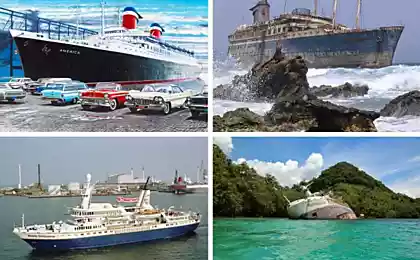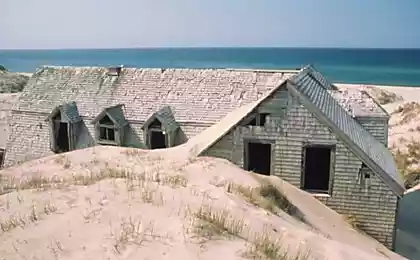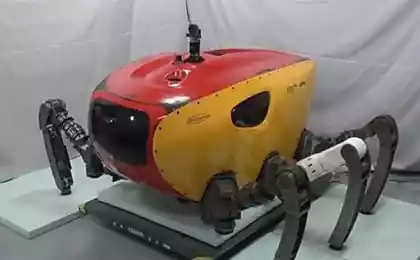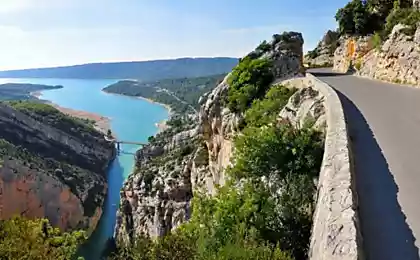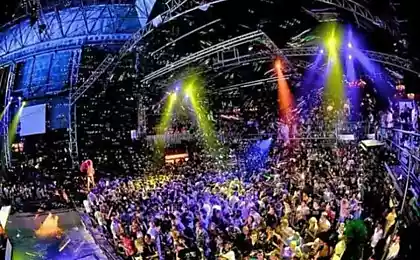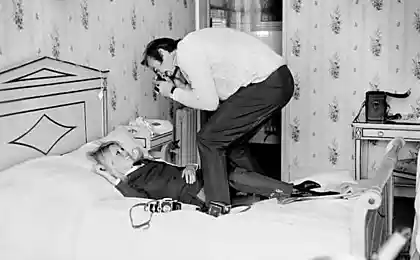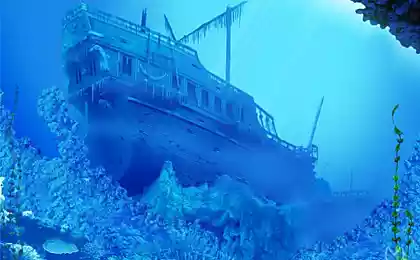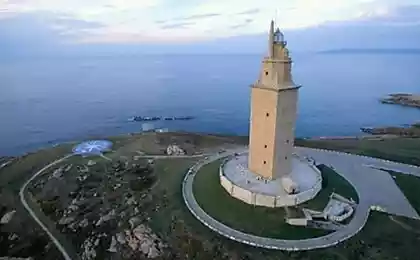1226
12 most famous shipwrecks
According to experts, there are about four million shipwrecks scattered across the oceans, some of which are already more than a thousand years. Even the numbers of known wrecks are impressive.
A large number of shipwrecks are historically significant and are under UNESCO protection, as the underwater cultural heritage. Some ships ran aground near the beaches, and gradually rot under the forces of nature. Some of them have become tourist attractions.
Last shipwreck, which attracted much media attention, occurred in January 2012, when the Costa Concordia cruise ship overturned in the waters near the island of Isola del Giglio on Italy's west coast. Overturned vehicle attracts thousands of curious tourists.
Here we have compiled some impressive wrecks, which are worth a look, until the time they destroyed.
42 photos
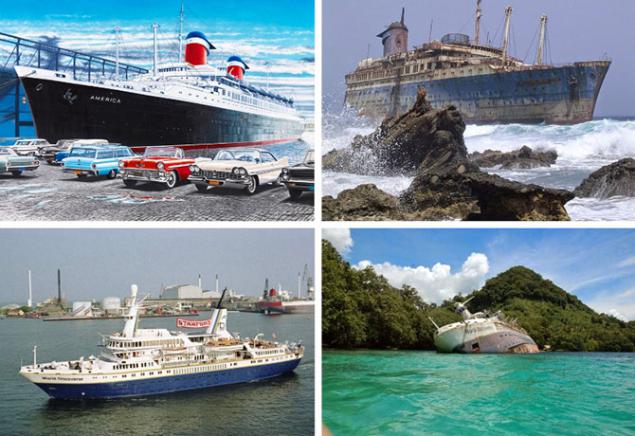
«SS America»
«SS America" was an ocean liner built in 1940. After a long career, the liner was sold in 1993 to be renovated and become a five-star hotel in Phuket (Thailand). At this time the ship was renamed "American Star", although he never sailed with the new name. The ship was towed from Greece to Atlantic Ukrainian tugboat. However, the ship was in a storm, a tow rope broke, the crew on board the «SS America" was rescued by helicopter and the ship was adrift. January 18, the ship ran aground off the west coast of the island of Fuerteventura (Canary Islands).
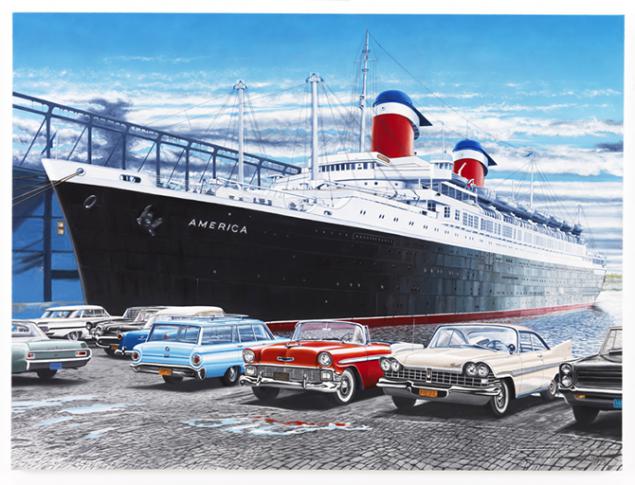
Fragments of "American Star» (SS America) in July 2004.
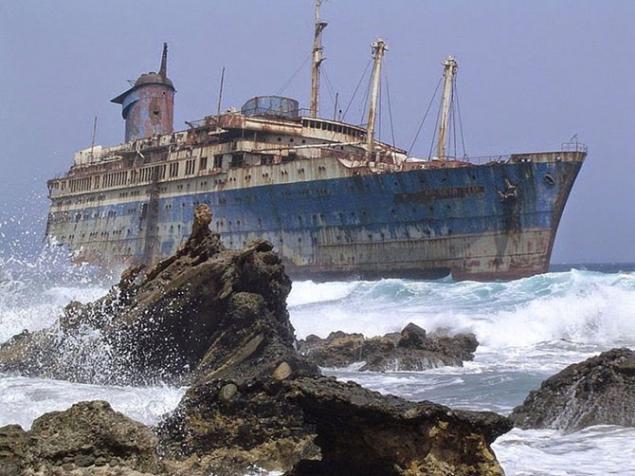
//
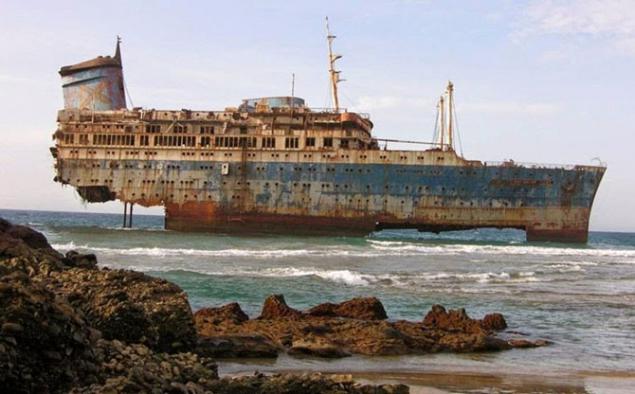
//
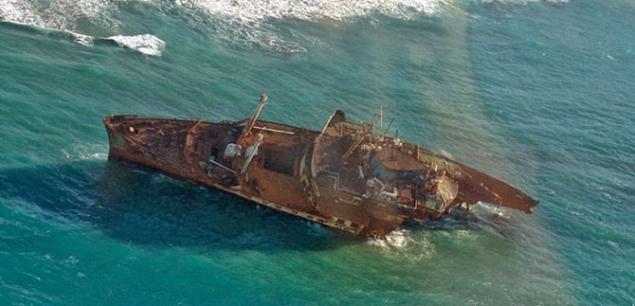
"The discoverer of the world»
"Discovered the World" was a big cruise ship, built in 1974 and carries out periodic flights to Antarctica and the polar regions, to allow its passengers to admire the ice hummocks and icebergs. The ship had a double hull, which provides protection from minor impacts. Still, April 30, 2000 the ship struck the reef and struck the body near the Solomon Islands. The captain sent a ship in the Gulf of Roderick and put him on a bank, to avoid flooding. Crew and passengers were evacuated and the ship was later sacked by the locals.
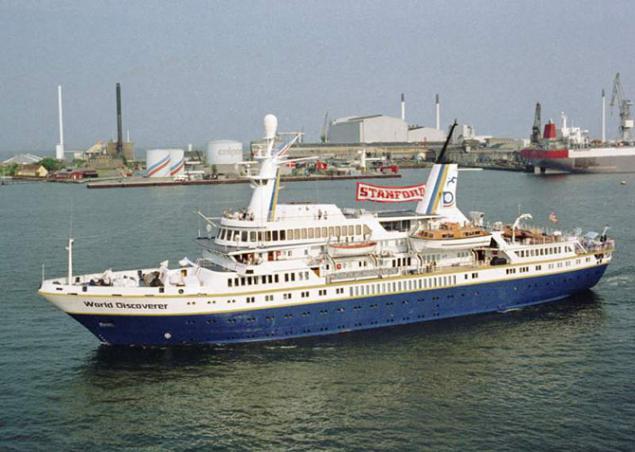
//
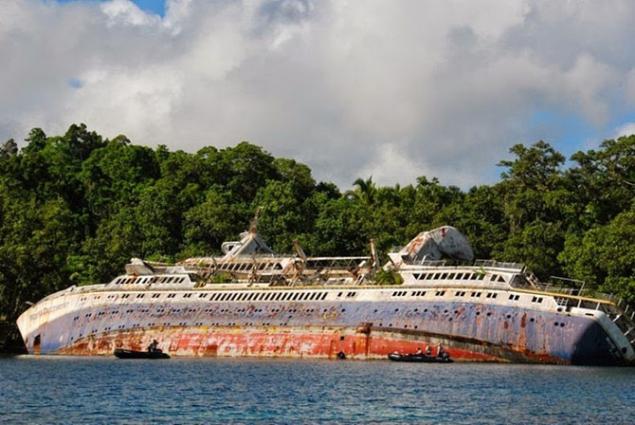
//
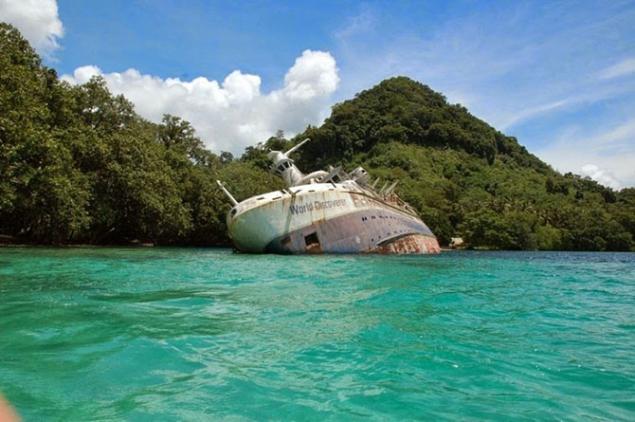
//
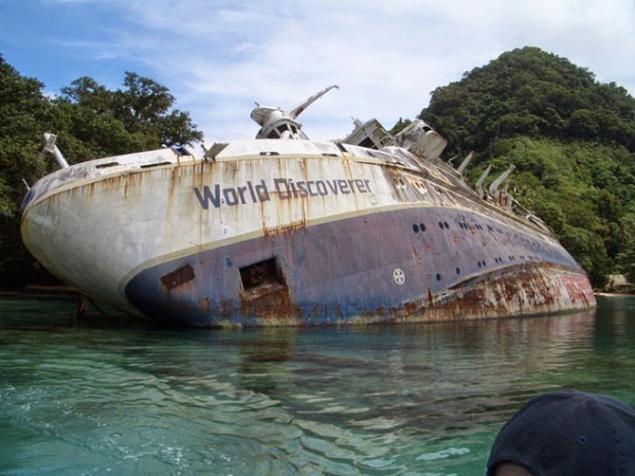
"The Mediterranean sky»
Cruise ship "Mediterranean Sky" was originally called "New York" and was built in 1952 in Newcastle (England). His last voyage the ship made in August 1996.
Due to financial problems, which owns the company, "Mediterranean Sky" was arrested in 1997 in Patras. Two years later he was towed to Eleuzussky Gulf in Greece, where he was abandoned. In late 2002, the ship began to fill with water, and began to bend. To stop the flooding, it was towed to shallow water. In January 2003 the "Mediterranean Sky" tipped over on its side, where it is awaiting his fate.
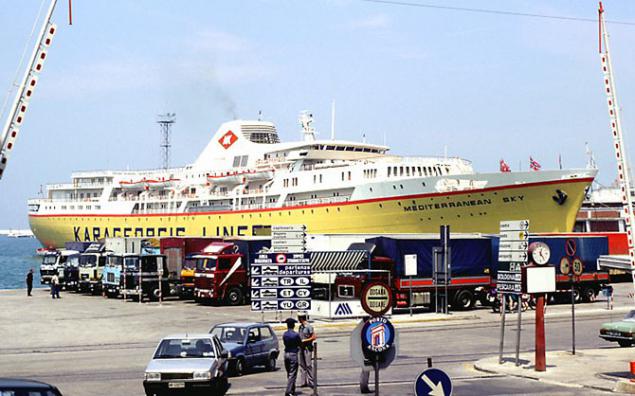
//
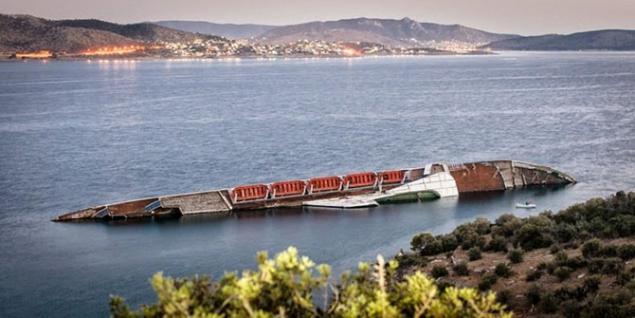
//
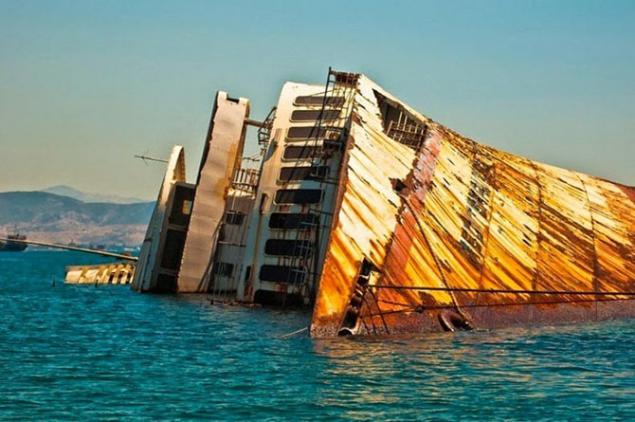
//
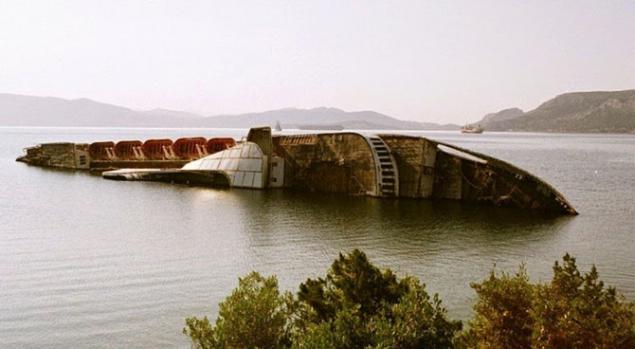
"MB Captayannis»
Captayannis was Greek barge for transportation of raw sugar. She sank on the River Clyde (Scotland) in 1974 after colliding with the oil tanker. The tanker did not suffer any damage, but the anchor chain holed Captayannis so that the ship was filled with water. Captain Captayannis tried to bring the ship in shallow water, and he sat down on a sandbank. The ship turned up the next morning, and lay there until now.
While the ship is in relatively shallow waters, there has never been any attempt to save the remnants of the vessel. After a while Captayannis became home to marine life and birds.
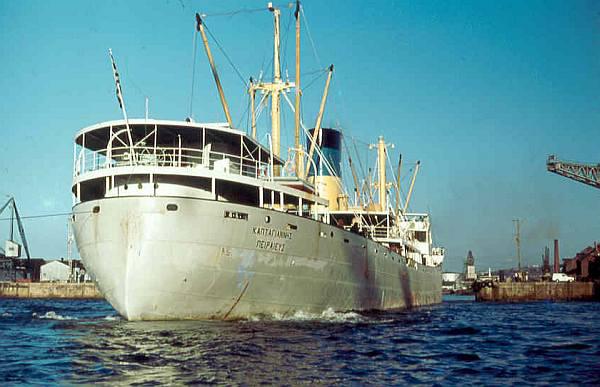
//
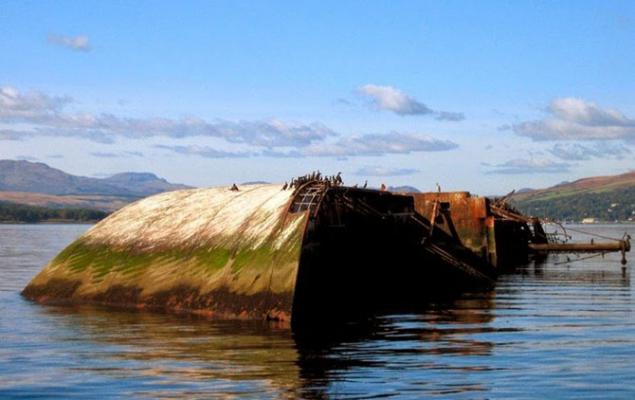
BOS-400
BOS-400 - French floating platform, which ran aground in Maori Bay in South Africa, during a storm, a Russian tugboat towed June 26, 1994. BOS-400 was the largest floating crane in Africa. The tug was chartered to tow the BOS-400 from the Republic of Congo to Cape Town (South Africa). However, during a storm tow rope broke and the platform was thrown aground, where she is to this day.
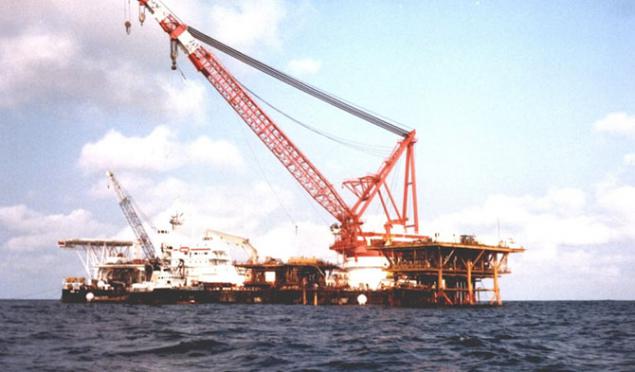
//
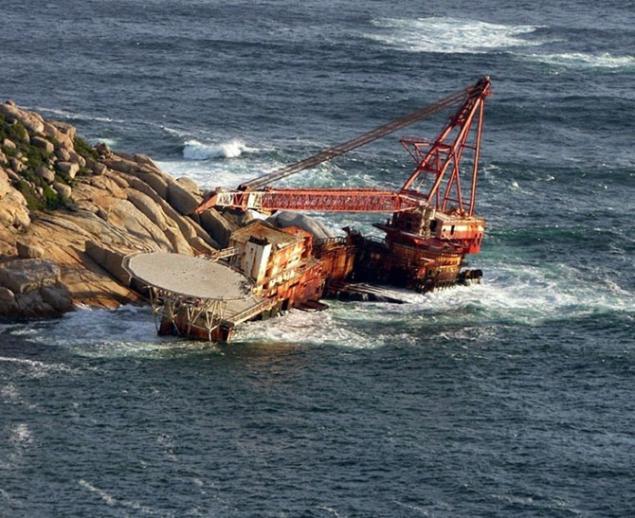
//
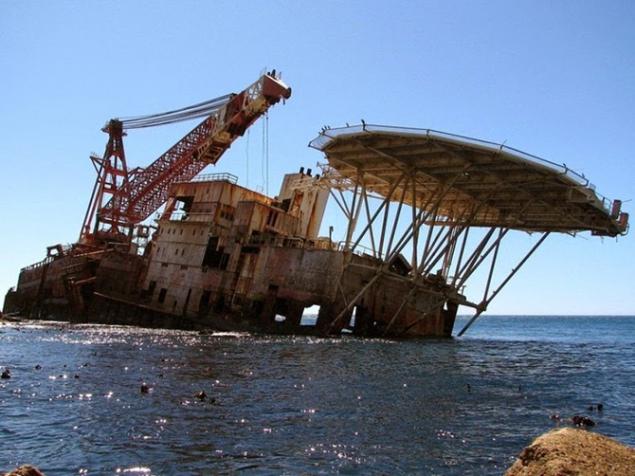
//
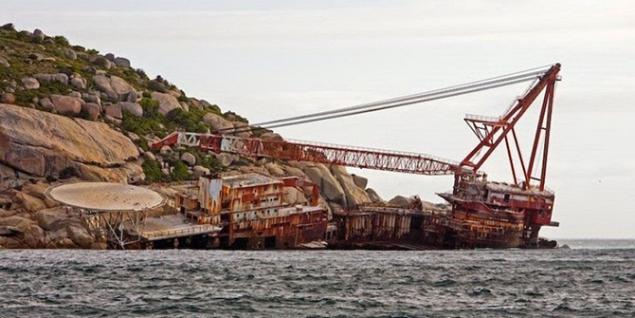
«La Famille Express»
The ship «La Famille Express» shipwrecked in the southern waters of the Turks and Caicos Islands in the Caribbean. The vessel was built in 1952 in Poland and most of his life served in the Soviet Navy as "Fort Shevchenko". In 1999 the ship was sold and renamed «La Famille Express». The circumstances of the crash is not clearly known, except that he ran aground during Hurricane Frances in 2004. Now the ship is a big local landmark and attracts large number of tourists.
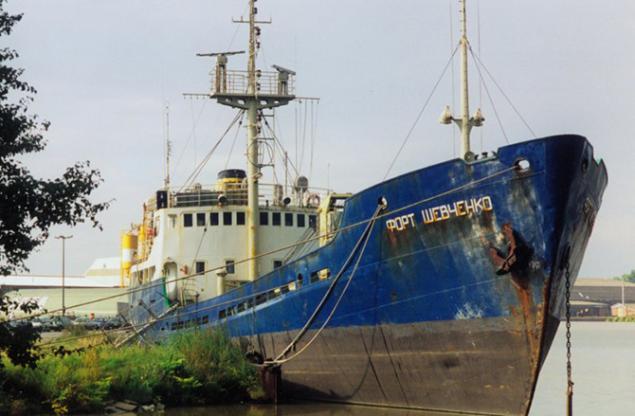
//
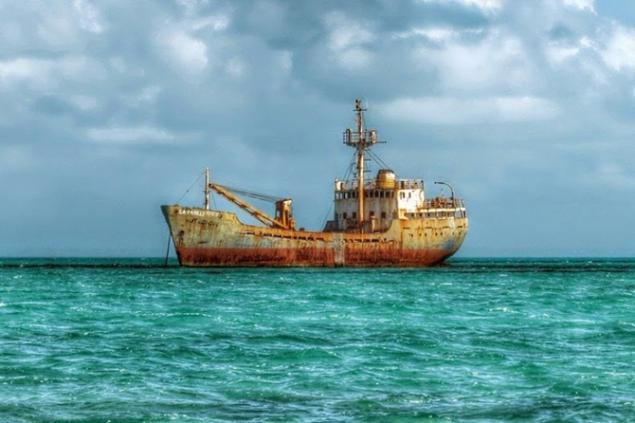
//
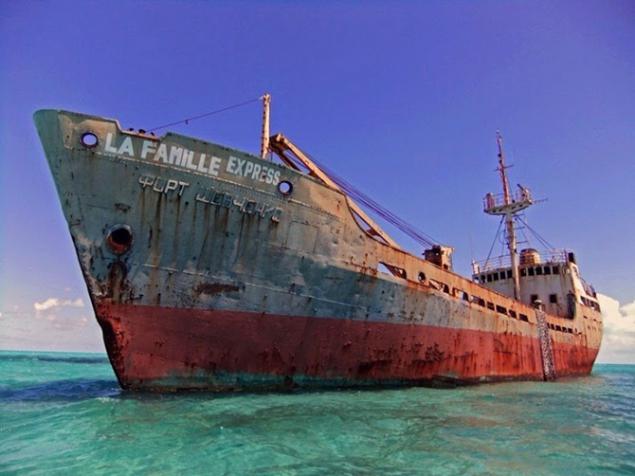
«HMAS Defender»
«HMAS Defender" was a big gunboat acquired by the Government of South Australia in 1884, in order to protect the coast against a possible "Russian threat" of the 1870s. «HMAS Defender" served during the Boxer Rebellion, I, and World War II. In July 1943 «HMAS Defender" was requisitioned for military service in the US Navy. On the way to New Guinea, the ship was damaged in a collision with a tug. The case subsequently ran aground off the coast of Queensland. Its rusting remains are still visible to this day.
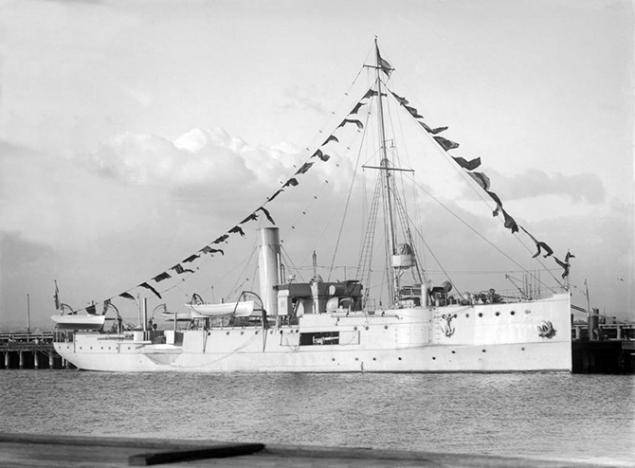
//
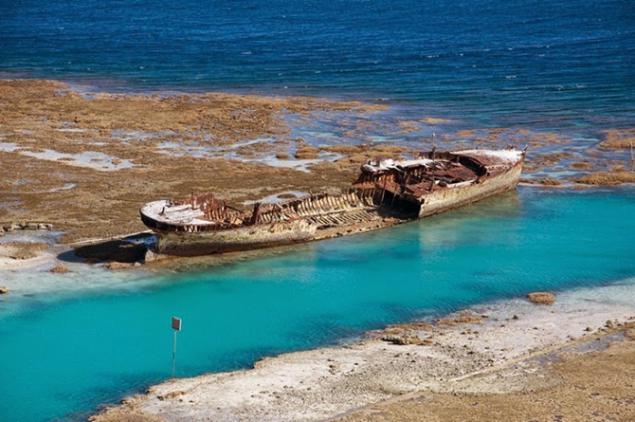
//
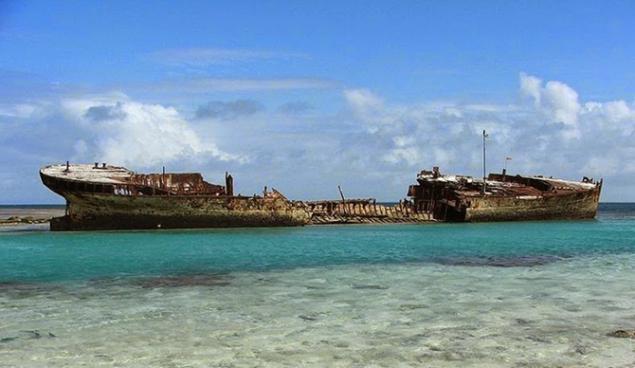
"Evangeleh»
"Evangeleh" - a merchant ship built in the same shipyard as the "Titanic" and launched on May 28, 1942 titled "Empire forces." Later, she had several names and eventually was named "Evangeleh».
In 1968, during a night of thick fog the ship sailed extremely close to the shoreline and ran aground near Costinesti. Some argue that "Evangeleh" was intentionally destroyed by the owner to receive insurance compensation. The hypothesis is confirmed by the fact that at the time of the disaster, but the fog was very thick, but the sea was extremely calm and almost all of the equipment of the ship worked perfectly.
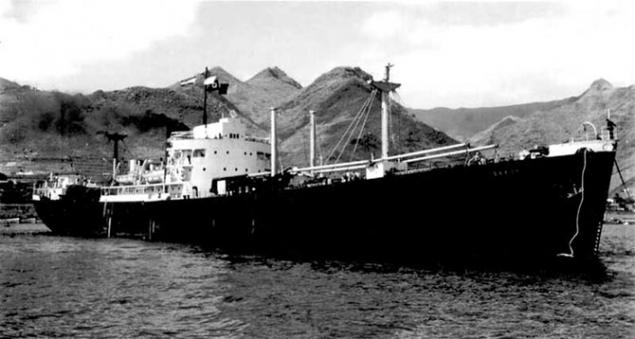
Source:
A large number of shipwrecks are historically significant and are under UNESCO protection, as the underwater cultural heritage. Some ships ran aground near the beaches, and gradually rot under the forces of nature. Some of them have become tourist attractions.
Last shipwreck, which attracted much media attention, occurred in January 2012, when the Costa Concordia cruise ship overturned in the waters near the island of Isola del Giglio on Italy's west coast. Overturned vehicle attracts thousands of curious tourists.
Here we have compiled some impressive wrecks, which are worth a look, until the time they destroyed.
42 photos

«SS America»
«SS America" was an ocean liner built in 1940. After a long career, the liner was sold in 1993 to be renovated and become a five-star hotel in Phuket (Thailand). At this time the ship was renamed "American Star", although he never sailed with the new name. The ship was towed from Greece to Atlantic Ukrainian tugboat. However, the ship was in a storm, a tow rope broke, the crew on board the «SS America" was rescued by helicopter and the ship was adrift. January 18, the ship ran aground off the west coast of the island of Fuerteventura (Canary Islands).

Fragments of "American Star» (SS America) in July 2004.

//

//

"The discoverer of the world»
"Discovered the World" was a big cruise ship, built in 1974 and carries out periodic flights to Antarctica and the polar regions, to allow its passengers to admire the ice hummocks and icebergs. The ship had a double hull, which provides protection from minor impacts. Still, April 30, 2000 the ship struck the reef and struck the body near the Solomon Islands. The captain sent a ship in the Gulf of Roderick and put him on a bank, to avoid flooding. Crew and passengers were evacuated and the ship was later sacked by the locals.

//

//

//

"The Mediterranean sky»
Cruise ship "Mediterranean Sky" was originally called "New York" and was built in 1952 in Newcastle (England). His last voyage the ship made in August 1996.
Due to financial problems, which owns the company, "Mediterranean Sky" was arrested in 1997 in Patras. Two years later he was towed to Eleuzussky Gulf in Greece, where he was abandoned. In late 2002, the ship began to fill with water, and began to bend. To stop the flooding, it was towed to shallow water. In January 2003 the "Mediterranean Sky" tipped over on its side, where it is awaiting his fate.

//

//

//

"MB Captayannis»
Captayannis was Greek barge for transportation of raw sugar. She sank on the River Clyde (Scotland) in 1974 after colliding with the oil tanker. The tanker did not suffer any damage, but the anchor chain holed Captayannis so that the ship was filled with water. Captain Captayannis tried to bring the ship in shallow water, and he sat down on a sandbank. The ship turned up the next morning, and lay there until now.
While the ship is in relatively shallow waters, there has never been any attempt to save the remnants of the vessel. After a while Captayannis became home to marine life and birds.

//

BOS-400
BOS-400 - French floating platform, which ran aground in Maori Bay in South Africa, during a storm, a Russian tugboat towed June 26, 1994. BOS-400 was the largest floating crane in Africa. The tug was chartered to tow the BOS-400 from the Republic of Congo to Cape Town (South Africa). However, during a storm tow rope broke and the platform was thrown aground, where she is to this day.

//

//

//

«La Famille Express»
The ship «La Famille Express» shipwrecked in the southern waters of the Turks and Caicos Islands in the Caribbean. The vessel was built in 1952 in Poland and most of his life served in the Soviet Navy as "Fort Shevchenko". In 1999 the ship was sold and renamed «La Famille Express». The circumstances of the crash is not clearly known, except that he ran aground during Hurricane Frances in 2004. Now the ship is a big local landmark and attracts large number of tourists.

//

//

«HMAS Defender»
«HMAS Defender" was a big gunboat acquired by the Government of South Australia in 1884, in order to protect the coast against a possible "Russian threat" of the 1870s. «HMAS Defender" served during the Boxer Rebellion, I, and World War II. In July 1943 «HMAS Defender" was requisitioned for military service in the US Navy. On the way to New Guinea, the ship was damaged in a collision with a tug. The case subsequently ran aground off the coast of Queensland. Its rusting remains are still visible to this day.

//

//

"Evangeleh»
"Evangeleh" - a merchant ship built in the same shipyard as the "Titanic" and launched on May 28, 1942 titled "Empire forces." Later, she had several names and eventually was named "Evangeleh».
In 1968, during a night of thick fog the ship sailed extremely close to the shoreline and ran aground near Costinesti. Some argue that "Evangeleh" was intentionally destroyed by the owner to receive insurance compensation. The hypothesis is confirmed by the fact that at the time of the disaster, but the fog was very thick, but the sea was extremely calm and almost all of the equipment of the ship worked perfectly.

Source:

